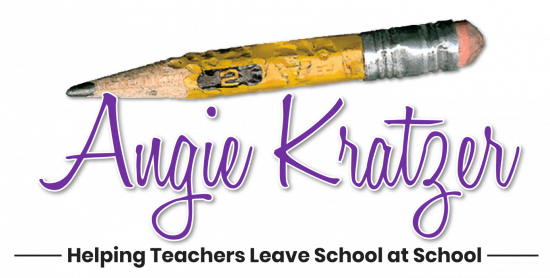The first time I read the transcript of his July 3 2020 address at Mount Rushmore, I was struck by Donald Trump’s rhetoric, specifically his ignorance of the history of that region. On my second reading, though, I decided that it was sugar coating or white washing, not ignorance. On my third reading, I knew that teaching this speech would be the way I would introduce the speaker’s relationship with an audience. It took two more readings before I could see the controlled use of parallelism and some pretty masterful dog whistling.

So I wrote this amazing close reading activity for the speech and showed it to a friend who was a high school administrator. (I knew I needed a filter just to make sure I had not brought my own biases into the actual lesson plan.)
The Awful Truth
HE EVISCERATED IT and told me, “When the parents start calling—and they most certainly will—I’m not sure I could defend you.”
So much for my own self-awareness.
I went back through my close reading questions and re-wrote the stems. I went back through my teacher guide and hunted down places in which I was not being objective. Satisfied with my revisions, I took them back to the administrator. FOUR HOURS LATER, after we had gone through the exercise line by line, I did it all over again. Unable to see the speech for the speaker, I had painted the address–which the president had not written–with my feelings about Donald Trump.
That’s a dangerous thing for a teacher to do. I’m pretty transparent, so people figure out quickly where I stand on political issues, but I know that my job is to lead teenagers to think critically, not teach them to be critical of those people of whom I disapprove. I wrote more about dealing with politics in the classroom in another post if you want to check it out.
After this humbling experience, I’ve come up with a little guide for myself when it comes to addressing Donald Trump’s rhetoric with students.
10 Tips for Dealing with President Trump’s Rhetoric
- Deal with the writer of the speech as a separate entity from the speaker. Presidents don’t generally write their own addresses, so get to know the writing styles of the actual speech writers so that you can divorce them from the president.
- Lean in to audience awareness. It’s tempting to be overly critical of President Trump’s narrow vocabulary and juvenile speech patterns, but he has a keen understanding of his audience. He knows exactly who his base is and how to talk to them.
- Focus on messaging. The president is consistent in his purpose. Look with students at common threads across a variety of addresses.
- Train students’ ears. Have students practice analyzing writing and speaking styles by comparing one of President Trump’s prepared speeches with an extemporaneous campaign rally speech. Off the cuff, his language is charged and inflammatory. Prepared, his language is a bit more subtle.
- Let the analysis come from students. Distribute a categorized tone list and a set of tweets and have the class decide what the tone of each is. Resist leading students to the tone you have in mind.
- Seek another perspective. Are you on the left? Want to see if there are red flags in your lesson plan? Let a man with a conservative radar read your work. Are you on the right? Let a person with a liberal radar take a look at it.
- Give parents a heads up. If you teach high school English in the United States in an election year, you just can’t ignore campaign rhetoric. Make sure at Open House (or Open Zoom) that you tell parents that their children will be looking closely at political rhetoric. Get in front of the complaints and explain how you’ll be using it.
- Bring the balance. If you use a Trump speech, use a Biden speech. If you have students analyze the rhetoric of an impeachment defense, be sure to pull in the rhetoric of an accuser.
- Dig deep into background knowledge. In my activity on the Mount Rushmore speech, I included a background knowledge builder so that students would come in equipped with an understanding of Trump’s allusions.
- Focus on context. If equipped with background knowledge and even a superficial understanding of rhetoric, students won’t have to be led to the realization that Donald Trump’s speeches are rife with irony. When looking at the Rushmore address, someone in the room will connect with the fact that Donald Trump gave this address at the height of the Black Lives Matter movement in front of a monument designed by a KKK sympathizer. Someone will make the connection that he celebrates Teddy Roosevelt—who said, “The only good Indian is a dead Indian”—at the base of a mountain the Unites States government stole from the Lakota Sioux. An astute student can bring the controversies to light; the teacher doesn’t have to risk it.
So, what if getting in front of it doesn’t do the trick? What if a parent accuses you of an attempt at liberal brainwashing?
3 Tips for Addressing Parent Concerns
- Mirror the concern. Parents want mainly to be heard (Trust me on his; I’m quite the squeaky wheel.), so hear them. Mirror back what they are saying so that they know you understand their concerns. It might go something like, “So what I hear you saying is that you think my motive is to indoctrinate your son?”
- Show the standards. If parents understand that you are actually teaching your state’s standard course of study, you’ll be on firmer ground. I can hit a number of standards with one speech. For example, Trump’s thesis at Rushmore is fairly easy to get to, and the skill set I would have to use to decipher it is this one: Determine a central idea of a text and analyze its development over the course of the text, including how it emerges and is shaped and refined by specific details; provide an objective summary of the text.
- Invite an administrator. Worried about not being supported by administration? Invite an immediate supervisor to observe the lesson itself so that she or he can sit in on the parent conference with a full understanding of the content.
A Helpful Resource

This 63-page close reading activity (you know, the one I revised over and over and over to clean up my bias) is now published for other teachers to use in a face-to-face or virtual classroom. It is provided in both PDF and Google Slides, and the slides have editable text boxes on student pages. Included is a background building activity and teacher guide, the full speech and corresponding close reading questions, a thorough teaching guide with sample student responses for each question, a rhetorical analysis prompt, and a rubric that is aligned with the newest iteration of the Question 2 AP Lang exam rubric.
How about some graphic organizers to help you teach image analysis? They are great for political cartoons.


